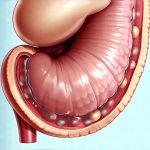Indigestion is an incredibly common experience, affecting a vast majority of people at some point in their lives. Often dismissed as merely uncomfortable, it can range from mild bloating and heartburn to more debilitating symptoms like nausea, stomach pain, and even vomiting. Many factors contribute to indigestion – dietary choices, stress levels, underlying health conditions, and the speed at which we consume our meals are all significant players. However, one simple, accessible remedy often overlooked is the practice of taking a light walk after eating. This isn’t about rigorous exercise or intense physical activity; it’s about gentle movement that leverages the body’s natural processes to aid digestion and alleviate discomfort.
The idea of post-meal ambulation dates back centuries and connects with ancient wisdom around holistic health practices. It resonates with the understanding that our bodies aren’t designed for prolonged periods of stillness, especially immediately after expending energy on digestion. A leisurely walk isn’t a cure-all, but it can be a powerful preventative measure and a valuable tool in managing occasional indigestion symptoms. By understanding why walking helps – the physiological mechanisms at play – we can better incorporate this simple habit into our daily routines and experience its benefits firsthand. If you often struggle with discomfort after eating, consider reading how to soothe your gut.
The Physiology of Post-Meal Walking
The digestive system is a complex, energy-intensive process. It begins with chewing, moves to the stomach where food is churned and broken down by acids, then continues in the small intestine for nutrient absorption, and finally reaches the large intestine for waste processing. Each stage requires peristalsis, the involuntary contraction of smooth muscle that pushes food along the digestive tract. Sometimes, this process can be sluggish, leading to bloating, gas, and discomfort—the hallmarks of indigestion. Walking gently stimulates peristalsis, effectively speeding up digestion and helping move things along. It’s like giving your digestive system a little nudge in the right direction.
Beyond simply accelerating the movement of food, walking also impacts blood flow. After eating, blood is redirected towards the stomach and intestines to support the digestive process. This can sometimes lead to a feeling of sluggishness or fatigue as less blood is available for other parts of the body. Light exercise like walking helps maintain circulation throughout the body, preventing that post-meal energy dip and ensuring efficient delivery of oxygen and nutrients to all systems. Improved blood flow also aids in the absorption of nutrients, maximizing the benefits from your meal. Learning how to prepare meals can reduce indigestion too!
Finally, walking can help regulate cortisol levels. While often associated with stress, cortisol plays a role in digestion. Elevated stress (and therefore elevated cortisol) can disrupt digestive function. Gentle movement has been shown to have a calming effect and helps regulate hormone balance, promoting a more relaxed and efficient digestive process. It’s important to note that this is about light walking; strenuous exercise immediately after eating can actually hinder digestion by diverting blood flow away from the gut.
Why Light Intensity Matters
The key word here is “light.” The goal isn’t to burn calories or achieve a cardiovascular workout, but rather to gently stimulate digestive function. Vigorous activity post-meal can have counterproductive effects. – It can divert too much blood flow away from the digestive system. – It may cause cramping or discomfort if your stomach is actively processing food. – It could potentially lead to acid reflux in some individuals.
A light walk should feel comfortable and easy. You should be able to hold a conversation without feeling breathless. Think of it as an opportunity to enjoy the fresh air, clear your head, and give your body a gentle assist with its natural processes. Consider these guidelines for intensity: – Aim for a pace that doesn’t elevate your heart rate significantly. – Avoid hills or strenuous terrain immediately after eating. – Listen to your body – if you feel any discomfort, slow down or stop. Sometimes indigestion is caused by cramping after skipping meals.
Timing Your Walk for Optimal Results
The timing of your post-meal walk is crucial to its effectiveness. As mentioned, aiming for within 15-20 minutes of finishing eating provides the greatest benefit as it directly supports ongoing digestive processes. However, even a walk an hour or two after a meal can still be helpful, especially if you’re experiencing bloating or discomfort. It won’t have the same immediate impact on food breakdown, but it will continue to stimulate peristalsis and improve blood flow.
Consider these scenarios: 1. Large Meal: If you’ve eaten a particularly heavy or substantial meal, a longer walk (20-30 minutes) might be more beneficial. 2. Smaller Snack: For a light snack, even a 5-10 minute stroll can suffice. 3. Individual Tolerance: Pay attention to how your body responds. Some people may find that walking immediately after eating exacerbates their symptoms, while others thrive on it. Adjust the timing and duration based on your own experience. You might also want to explore digestive trouble after big meals.
It’s also important to avoid strenuous activity before a meal, as this can sometimes disrupt digestive processes even before you begin eating. Allowing time for digestion to start naturally is key. Combining post-meal walking with mindful eating habits – chewing thoroughly, eating slowly, and avoiding distractions – will create a synergistic effect and optimize your overall digestive health.
Incorporating It Into Your Routine
Making post-meal walking a habit doesn’t require a drastic lifestyle change; it’s about small, consistent steps. Start by incorporating a short walk after one meal per day – perhaps lunch or dinner – and gradually increase the frequency as you become more comfortable. – Integrate it into existing routines: Walk during your coffee break, after picking up children from school, or while running errands. – Make it enjoyable: Listen to music, podcasts, or audiobooks while walking. – Enlist a walking buddy: Having someone to walk with can provide motivation and make it more fun. Learning how to time your meals may also help.
Remember that consistency is key. Even if you only have 10 minutes, a regular post-meal walk will accumulate significant benefits over time. Don’t view it as another chore or obligation; instead, see it as an investment in your well-being – a simple act of self-care that can dramatically improve your digestive comfort and overall health. Prioritize movement rather than perfection. Some days you might walk further, other days shorter distances—that’s perfectly fine. The important thing is to keep moving.
It’s vital to remember that indigestion can sometimes be a symptom of an underlying medical condition. If you experience persistent or severe indigestion despite incorporating these lifestyle changes, it’s essential to consult with a healthcare professional to rule out any potential health concerns and receive appropriate diagnosis and treatment. This article provides general information about post-meal walking and its potential benefits for digestive comfort; it is not intended as medical advice. For those who struggle with fat-based meals, consider cramping and flatulence after eating too much.


















